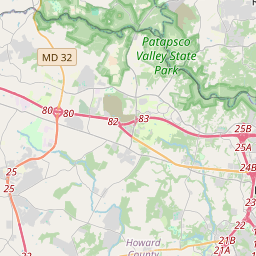Civil War Magazine
Historical marker location:






April 12, 1861: The Civil War begins with the Confederate attack on Fort Sumter, located in South Carolina's Charleston Harbor.
April 15, 1861: President Abraham Lincoln issues a call for 75,000 volunteers to serve in the Union Army to suppress the rebellion.
May 24, 1861: The first major land battle, known as the First Battle of Bull Run (or First Battle of Manassas), takes place in Virginia. It ends in Confederate victory.
September 17, 1862: The Battle of Antietam in Maryland becomes the bloodiest single-day battle in American history, with heavy casualties on both sides. The Union forces, commanded by General George McClellan, manage to halt Confederate General Robert E. Lee's advance into Union territory.
January 1, 1863: President Lincoln issues the Emancipation Proclamation, declaring that all slaves in Confederate-held territories are to be set free. However, the proclamation does not immediately free all slaves in the United States.
July 1-3, 1863: The Battle of Gettysburg in Pennsylvania takes place, resulting in a significant Union victory and inflicting heavy casualties on Confederate forces. It marks a turning point in the war.
November 19, 1863: President Lincoln delivers the Gettysburg Address, emphasizing the principles of liberty, equality, and the preservation of the Union.
April 9, 1865: General Robert E. Lee surrenders to Union General Ulysses S. Grant at Appomattox Court House in Virginia, effectively ending the Civil War.
April 14, 1865: President Lincoln is assassinated by John Wilkes Booth while attending a play at Ford's Theatre in Washington, D.C.
May 10, 1865: Confederate President Jefferson Davis is captured, signaling the collapse of the Confederate government.
December 6, 1865: The Thirteenth Amendment to the United States Constitution is ratified, officially abolishing slavery throughout the country.
While this timeline provides an overview of key events, it is important to note that the Civil War spanned over four years, from 1861 to 1865, and encompassed numerous battles, campaigns, and political developments that shaped the course of American history.
Maryland was originally intended to be called "Crescentia": Lord Baltimore's original plan was to name the colony after the Queen Henrietta Maria, the wife of King Charles I. However, the name was already taken, so he proposed the name "Crescentia" instead. The name was eventually changed to "Maryland" in honor of Henrietta Maria.
During the American Revolutionary War, Baltimore County played a significant role in supporting the war effort. It served as a key transportation hub, with roads connecting the county's towns and villages to Baltimore City and other regions. The county's early industries included flour milling, ironworking, and shipbuilding, which contributed to its growth and prosperity in the 18th and 19th centuries.
In the 19th century, Baltimore County experienced industrialization, driven by the growth of Baltimore City. The construction of railways and the expansion of the Baltimore and Ohio Railroad facilitated commerce and trade in the county. This period also saw the development of mill towns such as Catonsville and Dundalk, attracting a diverse workforce. The county was also home to notable historical figures like Frederick Douglass, who was born and enslaved in Talbot County.
In the 20th century, Baltimore County continued to grow and diversify its economy. The county experienced suburbanization as residents sought more space outside of the city, leading to the growth of residential communities and the establishment of suburban shopping centers. Today, Baltimore County is a vibrant and diverse area, known for its charming towns, cultural attractions, and natural landscapes, while preserving its historical heritage.
Baltimore County Timeline
This timeline provides a condensed summary of the historical journey of Baltimore County, Maryland.
- 1608: Captain John Smith explored the Chesapeake Bay and encountered Native American tribes in the Baltimore County area.
- 1661: Baltimore County was established as one of the original counties in the province of Maryland.
- 1674: The town of Joppa became the county seat.
- 1692: The county seat was moved to Baltimore, which was designated as a port of entry.
- 1729: The part of Baltimore County that is now Harford County was split off.
- 1768: Baltimore Town was incorporated as a city.
- 1777: Baltimore County became a part of the new independent state of Maryland.
- 1851: The Maryland State Fair, now known as the Maryland State Fair & Agricultural Society of Baltimore County, was first held in Timonium.
- 1854: Baltimore County was divided into three new counties - Baltimore County, Carroll County, and Howard County.
- 1931: Baltimore City and Baltimore County's governance was separated.
- 1974: The Carroll County portion of Baltimore County was split off to become a separate county.